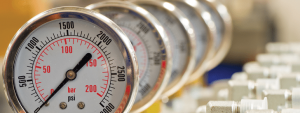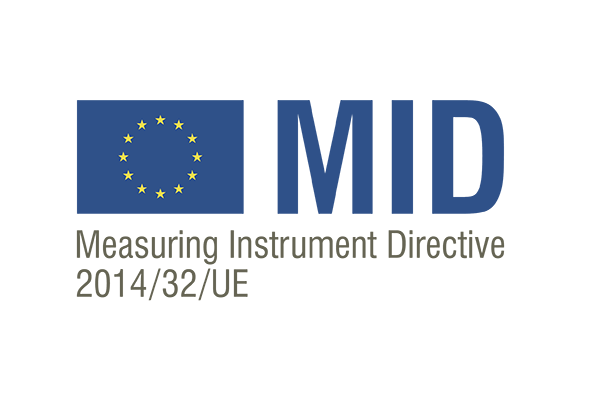What is the Measuring Instruments Directive?
The Measuring Instruments Directive (MID) is a European law that governs the essential requirements concerning the sale of the wide range of measuring instruments that are used in many commercial and industrial applications within the EU. This Directive covers a wide range of systems and devices that feature a measurement function that needs to be relied upon and produce a consistent reading.
Sub-assemblies, which function independently and then form part of a measuring instrument by being incorporated with other devices or into a compatible measuring instrument are also included in this directive. The Measuring Instruments Directive took effect on the 18th April 2014, repealing Directive 2004/22/EC with effect from 20th April 2016.
What does the directive seek to achieve?
The MID seeks to ensure that measuring instruments used for a wide variety of measurement tasks in the areas of public health and safety and of fair trading are fit for purpose and legally controlled.
The European Union law on the sale and the introduction into service of measuring instruments has 2 primary aims:
- Establish the essential requirements that any device or system with a measurement function has to satisfy
- Provide a high level of public protection

What devices are covered?
- Electricity meters
- Water meters
- Gas meters
- Fuel dispensers and metering systems on fuel tankers and delivery depots
- Metering systems for milk
- Automatic weighing instruments, catchweighers, checkweighers, weigh labellers and weigh/price labellers, gravimetric fillers, belt weighers and discontinuous totalisers
- Length measures
- Capacity-serving measures such as carafes, glasses or thimble measures
- Dimensional measuring instruments
- Taximeters
- Exhaust gas analysers.

What devices are not covered by MID?
- Material measures of capacity for liquids and grains
- Measuring containers
- Bulk milk cooler tanks
- Moisture content meters for cereal and oleaginous grain
- Level indicators
- Alcoholometers and hydrometers for alcohol and alcoholometric tables
- Automatic saccharimeters for sugar beet delivered to refineries and distilleries
- Refractometers for measuring sugar content of grape must
- Breathalysers
- Radar speed detectors
- Instruments for measuring the opacity of emissions from diesel engine vehicles
- Manometers used for inflation of vehicle tyres
- Sound level meters
- Thermometers used by state officials to check the temperature of perishable foodstuffs
Requirements of MID
All of the Measuring instruments that are applicable must meet a series of essential requirements, these being:
- Allowable errors
- The application of the same measurand in a different location or by a different user, with the same conditions, must result in the close agreement of successive measurements. The difference between the results must be minor when compared with the maximum permissible error.
- A measuring instrument shall be sufficiently sensitive and the discrimination threshold must be sufficiently low for the intended measurement task.
- The measuring instrument must be designed to maintain adequate stability of its metrological characteristics over a period of time estimated by the manufacturer, as long as it’s properly installed, maintained and used according to the manufacturer’s instructions when in the environmental conditions for which it is intended.
- A measuring instrument must be designed to reduce as far as possible the effect of a defect that would lead to an inaccurate measurement result, unless the presence of such a defect is obvious.
- The measuring instrument must be suitable for the intended use.
- The metrological characteristics of a measuring instrument must not be influenced in any inadmissible way by the connection to it of another device, by any feature of the connected device itself or by any remote device that communicates with the measuring instrument.
- Information to be borne by and accompany the instrument.
- Indication of the result shall be by means of a display or hard copy.
- Further processing of data to conclude the trading transaction.
- A measuring instrument must be designed so as to allow ready evaluation of its conformity with the appropriate requirements of this Directive.

Manufacturer Obligations
The manufacturer of a measuring device can choose which conformity assessment procedure they wish to follow and those procedures the manufacturer can choose from are listed in the relevant instrument-specific annexes of the MID. For each instrument-specific annex, such as exhaust gas analysers or taximeters, there are different conformity assessment procedures.
The Main Points
The Measuring Instrument Directive defines the responsibilities of EU manufacturers, importers and distributors in the context of the sale of measuring instruments.
- All such instruments on sale in the EU must bear the conformity marking consisting of the European conformity (CE) mark plus the supplementary metrology (M) mark, with the last two digits of the year and the notified body number(s) indicating that the manufacturer declares that they meet all the essential requirements of EU legislation.
- Before affixing the CE + M marking, the manufacturer must conduct a risk and conformity assessment and establish technical documentation for the instrument.
- Importers must check whether manufacturers have carried out conformity assessments correctly and inform the market surveillance authority if they consider that the instruments do not conform with the essential safety requirements.
- All necessary documentation must be kept for 10 years.
- Manufacturers may use electronic means to demonstrate conformity in a language easily understood by the competent national authority.
- The instructions and information accompanying the instrument must be written in a language easily understood by end-users as determined by the EU country in which the instrument is made available on the market.
- Manufacturers and importers must indicate their postal address on the instrument.
Additionally, the MID specifies how national authorities that monitor safety must identify and prevent the importation of dangerous measuring instruments from non-EU countries.
All of the European Union Member States are required to adopt, publish and apply the laws, regulations and administrative provisions necessary to comply with the Measuring Instruments Directive that has been in effect since the 20th April 2016.
Download a copy of the Measuring Instrument Directive
Kempston Controls stocks an impressive range of measuring devices of all kinds, from power monitoring, temperature monitoring to clamp meters, infrared thermometers, continuity testers and so much more. Call our dedicated sales team on +44 (0) 1933 411411 or email them at sales@kempstoncontrols.co.uk to discuss all your measuring device requirements.
Have you seen our other blogs?
Kempston Controls is committed to finding you the ideal solution for your application. Call us today on +44 (0) 1933 411 411, email us at sales@kempstoncontrols.co.uk, or alternatively contact us here, we will be happy to help.


